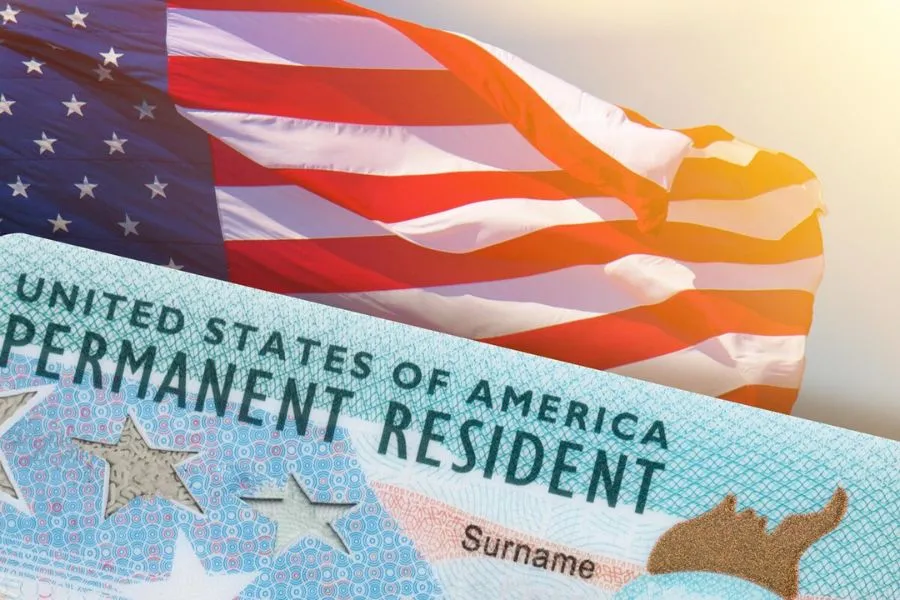For anyone eyeing a long-term future in the United States, the Green Card represents both opportunity and commitment. But before the American Dream begins, there’s something far more grounded to tackle—the price tag. In 2025, obtaining a U.S. Green Card isn’t just a paperwork challenge—it’s a financial one too. From filing forms and undergoing medical checks to attorney fees and biometric services, each step comes with its own cost. Whether you’re applying from within the U.S. or from abroad, it’s wise to understand what you’re signing up for, financially.
So, how much does it cost to get a Green Card in 2025? Let’s break it down.
Key Takeaways
Green Card Through Family: The Most Common Route
If you’re applying for a Green Card through a family member—say, a U.S. citizen spouse or parent—the main costs are fairly standardized. As of 2025, the filing fee for Form I-130 (Petition for Alien Relative) is $675. Once that’s approved, the real expenses start.
If you’re already in the U.S. and adjusting your status, you’ll need to file Form I-485 (Application to Register Permanent Residence or Adjust Status), which now costs $1,440. This includes biometrics. If you’re outside the U.S., you’ll go through consular processing, which includes an NVC processing fee of $445 and a USCIS immigrant fee of $220. Tack on a medical exam, which typically ranges between $200–$500, depending on your provider.
On average, a family-based Green Card can cost you between $1,500 and $2,500, not counting travel or legal help.
Employment-Based Green Card: Higher Stakes, Higher Fees
Going the job route? Prepare for a longer process—and a steeper bill. Employment-based Green Cards usually require a PERM labor certification, followed by multiple petitions. Here’s how it stacks up in 2025:
- PERM Process (paid by employer): $0 for the applicant, but often thousands for the employer
- Form I-140 (Immigrant Petition for Alien Worker): $715
- Form I-485 (if adjusting in the U.S.): $1,440
- Medical Exam: $200–$500
- Premium Processing (optional): $2,805
Even if your employer covers some fees, expect total expenses of $2,500 to $5,000, especially if you add in optional services or legal advice.
Also Read: Can You Study in the USA Without SAT or IELTS in 2025?
Diversity Visa (DV) Lottery Winners: A Budget-Friendly Option?
Winning the Green Card lottery? First off, congrats. But free entry doesn’t mean a free card. Once selected, you’ll need to pay for:
- DS-260 (Online Immigrant Visa Application): $330
- USCIS Immigrant Fee: $220
- Medical Exam: $200–$500
Even without a sponsor or legal help, you’re still looking at $750 to $1,100 in basic fees. Add airfare and possible document translations, and it climbs further.

Legal Help: Is a Lawyer Necessary?
Technically? No. But practically? It often helps. Immigration laws in the U.S. are famously complex. One small mistake can delay your Green Card—or worse, get your case denied. Many applicants choose to hire immigration attorneys, especially for employment-based or complicated family cases.
In 2025, attorney fees vary:
- Family-based Green Card: $1,500–$3,000
- Employment-based Green Card: $2,000–$6,000
- Complex cases (waivers, inadmissibility): Can exceed $10,000
It’s not mandatory, but if you’re unsure of your eligibility or have a unique case history, legal support might be worth every dollar.
Hidden and Miscellaneous Costs You Shouldn’t Forget
Beyond the official forms and medical checks, there are often costs that sneak up on applicants. These may include:
- Translation and notarization services: $100–$300
- Passport renewal or police clearance certificates: Varies by country
- Courier or mailing services for overseas applicants: $50–$100
- Vaccinations (if your shots are incomplete): $150–$600
If you’re planning, budgeting an extra $500–$1,000 for these hidden costs is wise.
What About Green Card Renewals or Replacements?
If you’ve already got a Green Card and need to renew it (say, your 10-year card is expiring), the cost in 2025 is:
- Form I-90 (Green Card Renewal): $455
- Biometrics Fee: $85
- Total: $540
Lost or stolen card? Same form, same fee.
Also Read: How to Appeal a Rejected US Visa in 2025
Can You Pay in Installments or Get Fee Waivers?
The USCIS does not currently offer installment payment plans, but fee waivers are available for certain forms if you can prove financial hardship. This mostly applies to humanitarian-based applications or very low-income individuals. Unfortunately, for most employment- or family-based categories, you’ll have to foot the full bill.
So, What’s the Total Cost in 2025?
Let’s be real. No two immigration journeys are the same, but here’s a rough estimate:
- Family-Based Green Card: $1,500 – $2,500
- Employment-Based Green Card: $2,500 – $5,000
- DV Lottery Winner: $750 – $1,100
- With Attorney Fees: Add $1,500 – $6,000
- Hidden/Extra Costs: $500 – $1,000
Depending on your route and whether you seek legal help, the total cost to get a Green Card in 2025 could range anywhere between $1,500 and $10,000.
Final Thoughts: Is It Worth It?
If you’re planning to live, work, and eventually apply for U.S. citizenship, the Green Card is the golden ticket—but it doesn’t come cheap. Between mandatory government fees and optional (yet often necessary) services, it’s a serious investment. But for many, it pays off—permanently.
If you’re just beginning your immigration journey to the U.S., understanding the full cost landscape is the first step. The second? Making sure every form you file is worth the dollars you’re spending.





